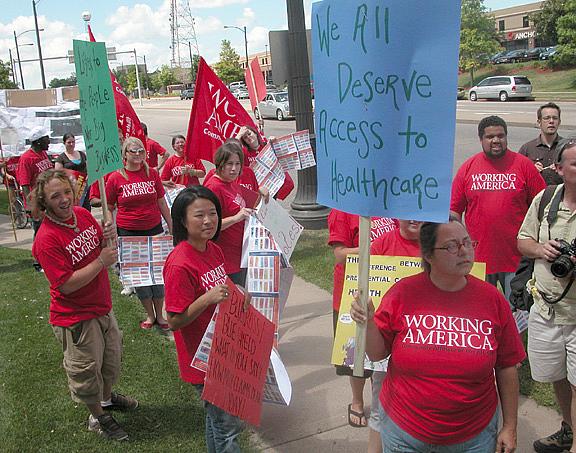2014 Is Coming Sooner Than You Think: New Ideas for Reporting on Health Reform's Rollout

Last week, thanks to a program for journalists sponsored by the Kaiser Family Foundation, I learned about how California plans to roll out national health reform from some pretty influential people working to make it happen. Although California has been a national leader in setting up its health reform infrastructure, like a health insurance exchange, the state's $25 billion deficit is slowing down its efforts.
"The stakes are really quite high," Kim Belshé, California's former secretary of health and human services told us. "There is a lot of public fear about what reform is and isn't. Now a board member of California's Health Benefit Exchange, Belshé said the preparations do "feel like it's impossible given how complex these factors are, how expensive they are," yet "our status quo is absolutely unsustainable and unacceptable. We have seven million Californians uninsured."
With that in mind, here are some of the issues you should start thinking about as you prepare to cover the implementation of the Patient Protection and Affordable Care Act in your own communities. These issues are applicable to many states, not just California, and I'll be writing more on this topic later this week.
1. "Culture of coverage." You're going to hear this buzzword a lot until 2014 and beyond. It basically means creating an environment where being insured for health is the norm for everyone, just as it's the cultural norm to have car insurance if you own a car. It's worth exploring in your community where a culture of coverage already exists and, more importantly, where it doesn't.
2. Get acquainted with the "implementers." Now's the time to start creating your source list of folks responsible for health reform's rollout in your community and state. That means the people in charge of setting up the state's health exchange, leaders of local community clinics, top Medicaid officials, public hospital CEOs, etc. If you don't know where to start, call your local community clinic consortium, state Medicaid director or state association of public hospital directors.
3. Keep on top of state legislation enabling – or blocking – health reform rollout. Here's a great resource: the National Conference of State Legislatures' State Legislative Tracking Database on Health Reform.
4. Who's doing the outreach? Who will be responsible for educating state residents about health reform and the individual mandate? Will they have enough money (or any money) to do a good job? States can get federal grants to help pay for outreach workers to help people sign up for various kinds of government and private health insurance. Will some of that money go to your local community clinics, which will play a big role local outreach work?
5. Local experiments. Who in your community already is trying to improve delivery of health care ahead of health reform? Some safety net hospitals, like San Francisco General Hospital, are trying new ways to coordinate care for Medicaid and uninsured patients to better prepare for health reform's changes.
I'll have more on how you can report on those experiments later this week.
Related Posts:
Your Safety-Net Hospital and Health Reform: Questions to Ask Now
Photo credit: Bernard Pollack via Flickr

